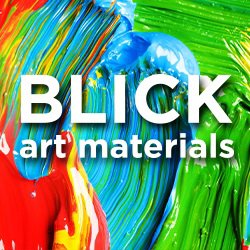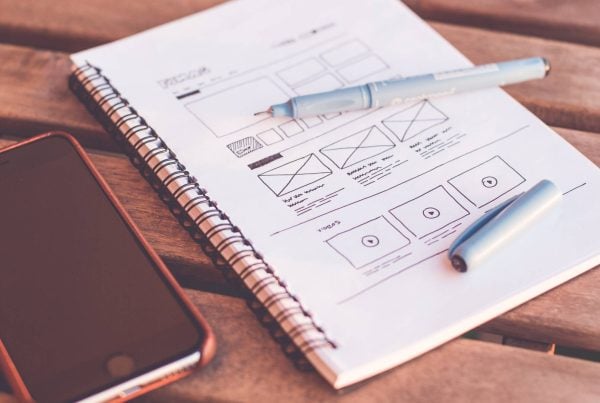When working from a home printmaking studio, efficiency is not just desirable, it’s critical.
One’s ability to streamline their operations, minimise waste, and optimise performance can substantially impact productivity, cost-effectiveness, and, ultimately, profitability.
We will explore three key areas in the pursuit of an efficient home printmaking studio: optimal heating, strategic workspace layout, and the integration of technology.
For each area, we’ll delve into three specific elements, providing a comprehensive guide to maximising your home studio’s efficiency.
Table of Contents
Importance Of Heating In Your Home Printmaking Studio
Effective climate control is a cornerstone of any successful home studio, particularly one dedicated to printmaking.
Maintaining a stable, comfortable temperature ensures optimal conditions for both the artist and the materials involved.
From modern radiators to smart control systems, there are numerous ways to ensure your workspace is appropriately heated.
Modern Radiators: Efficiency And Aesthetics
The evolution of radiators from clunky, obtrusive equipment to sleek, design-conscious appliances has dramatically changed the possibilities for studio heating.
Modern radiators can offer more than just a heat source; they can blend into your studio’s decor, even becoming a design statement themselves.
Central to the modern radiator’s efficiency is its capacity for rapid, even heat distribution. When selecting a radiator, consider one with thermostatic controls.
This feature enables automatic adjustments based on ambient temperature, ensuring a consistently comfortable work environment while optimising energy use.
Insulation: Maintaining An Ideal Climate
Beyond heating equipment, insulation plays a critical role in maintaining an optimal studio temperature.
Proper insulation can reduce heat loss, thereby lowering energy consumption and creating a more stable and consistent environment conducive to printmaking processes.
Incorporating insulating materials in the studio’s walls, floors, and ceilings can be beneficial. However, also consider the efficiency of your windows.
Double or triple-glazed windows can help retain heat, further enhancing your studio’s thermal efficiency.
Scheduling Your Heating: Smart Control For Optimised Energy Use
Implementing a scheduled heating system can help manage energy use in a more targeted manner.
Smart thermostats and timers can help you regulate your studio’s temperature, aligning your heating schedule with your working hours, and allowing you to save energy when the studio is not in use.
Optimising Workspace Layout In Your Home Printmaking Studio
Crafting a thoughtfully arranged, well-lit, and ergonomic workspace is an integral aspect of operating an efficient printmaking studio.
The physical setup of your space directly impacts the speed and smoothness of your creative process.
The following are considerations to take into account when planning the layout of your workspace.
Arrangement Of Tools And Materials: A Strategic Approach
Your workspace layout directly influences your productivity.
A well-organised printmaking studio has a designated place for each tool and material, reducing the time spent searching for items.
Aim for a layout that follows your workflow. Position frequently used tools within easy reach and store materials near the areas where they are most often used.
Adequate Lighting: Essential For Precision And Comfort
Adequate lighting is vital in any creative workspace. Task lighting—focused, adjustable light sources—can help ensure precision in your printmaking process.
Ambient lighting, on the other hand, can create a comfortable and inspiring atmosphere.
Consider adjustable options that allow you to control light intensity based on your needs at different times of day.
Ergonomics: Health And Productivity
Ergonomics is the science of designing and arranging things people use so that the people and things interact most efficiently.
An ergonomic setup helps maintain physical health, preventing repetitive strain injuries that can result from poor posture or repetitive movements.
Investing in adjustable chairs, desks at the correct height, and even footrests can make long hours in the studio more comfortable and productive.
Incorporating Technology For Workflow Efficiency
In today’s digital age, technology can dramatically enhance the efficiency and scope of your printmaking endeavours.
From design software that facilitates creative experimentation to online platforms that extend your market reach, technology’s role in streamlining your workflow cannot be overstated.
Digital Design Software: Enhancing Creative Flexibility
While traditional printmaking techniques have their charm, incorporating digital design software into your workflow can significantly enhance your creative flexibility and efficiency.
Programs like Adobe Illustrator or Photoshop can help you experiment with designs, tweak compositions, and test colour combinations before committing to physical prints.
Inventory Management Tools: Streamlining Operations
Keeping track of supplies and materials can be time-consuming, especially in a busy home studio.
Utilising inventory management tools can help automate this process, allowing you to focus more on your creative work.
These tools can alert you when supplies are low, preventing work interruptions due to a lack of materials.
Online Marketplaces And Social Media: Expanding Your Reach
Leveraging technology to market and sell your prints can help expand your reach beyond local customers.
Online marketplaces like Etsy, eBay, or Amazon Handmade can provide platforms to showcase and sell your work.
In addition, social media platforms can be useful for promoting your work, engaging with your audience, and building your brand.
Final Thoughts
Establishing an efficient home printmaking studio is an art in itself. It necessitates careful consideration and fine-tuning of numerous elements—each contributing uniquely to the overall operation.
The importance of temperature regulation is paramount. Modern radiators and smart control systems can provide a consistently comfortable environment, crucial for both the artist’s comfort and the preservation of printmaking materials.
Coupled with effective insulation, these steps form the foundation of a studio that is not just a workspace, but also an energy-efficient one.
Next, a well-organised and ergonomic workspace layout is vital.
A carefully planned studio enhances productivity by reducing wasted time searching for tools and materials, ensuring adequate lighting, and promoting the physical well-being of the artist.
Lastly, the thoughtful integration of technology into your workflow can revolutionise your studio’s efficiency.
Digital design software, inventory management tools, and online platforms for showcasing and selling your work each play a role in streamlining operations and expanding your reach.
In essence, the road to a high-efficiency home printmaking studio lies in recognising and harnessing the synergies among these elements.
By implementing these strategies, you can transform your studio into a space that fosters creativity, boosts productivity, and ultimately, enhances the joy of the printmaking craft.










